Media | Articles
Retired circle-track racer finds new life turning left … and right
Long before CART, IRL, or IndyCar, the premier sanctioning body for open-wheel competition was the United States Auto Club (USAC). Each season, throughout the mid-twentieth century, racers competed on tracks of different surfaces and lengths. In one four-week stretch during the 1969 season, for example, teams battled on dirt in the 12.42-mile Pikes Peak Hill Climb, zipped around the 2.8-miles of paved road course at Continental Divide Raceway (Dan Gurney won that one), kicked up more dirt around the 1-mile oval at Nazareth Speedway, and negotiated the odd dogleg at the paved Trenton Speedway.
In 1971, the USAC Championship Car series was spun off into separate season points schedules. Today, after five decades of evolution, IndyCar contains traces of USAC’s on-pavement schedule—most notably the Indy 500—while the legacy dirt races and (a few paved ovals) now belong to USAC’s Silver Crown Series.
Silver Crown is now the series keeping the varied-surface flame burning. The season schedule flips from pavement to dirt to pavement like an Indiana backroad. Its driver roster is equally varied—a mix of full-timers, weekend warriors, and multiple women. The cars, with exception of their roll cages, look much like the front-engine roadsters that Gurney, Foyt, Andretti, and other open-wheel legends raced at the beginning of their careers. — Ed.
A modern Silver Crown car makes its living running in circles, so motorsports aficionados will know that something is very different about this one—even apart from that enormous wing.
In 2021, Montgomery Fabrication Group, a family of road racers from Northern California, teamed up with established sprint car racer Tim Barber to whip a Silver Crown into road-racing shape. Barber himself had raced a Silver Crown car years prior and knew who currently owned it. He and the family made an offer to the owner of Barber’s old car and hauled it home. Standing in the garage with their new purchase, the four of them decided to form MFG Motorsports and take the Silver Crown to the next level.
Marketplace
Buy and sell classics with confidence
Good bones
The car already had the basics for road-racing success: attenuator crash structures on both sides, symmetrical design, top and front wings from a World of Outlaws dirt sprint car, and a low-drag “slicker” body designed by IndyCar aerodynamicist Bruce Ashmore. Good bones go a long way with a project as ambitious as this one.
MFG plucked a Chevrolet V-8 from a Trans Am race car, bolted on a few pieces of an Indy car’s bodywork, and started an exhausting testing schedule. For the first few months, they focused more on basic reliability and functionality than anything else.
By the time the reinvented race car made its wheel-to-wheel debut in a United States Touring Car Championship (USTCC) event at Laguna Seca, MFG still hadn’t really tinkered with the setup much. Driver Sylas Montgomery was relying on his background in karts and Spec E30s to try and drive around the open-wheel car’s imperfections and get a sense of its untapped potential.
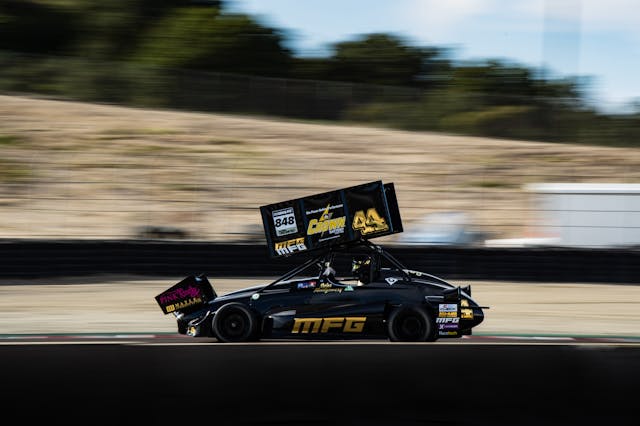
The results were promising. After starting from the back of the pack on Sunday’s race, Sylas sliced through the field into second position before pulling off prematurely; he and the MFG team had registered the car as an exhibition vehicle and didn’t want to hassle any of the regular USTCC racers fighting for the championship. None on the MFG team cared. They had proven their lightweight open-wheel racer had what it took.
With their confidence bolstered by a standout performance at the 2022 NASA Championships, they hatched a harebrained scheme involving a famous mountain in Colorado—Pikes Peak—and their odd open-wheel creation, which they’d dubbed the MFG Road Course Sprint Car.
Cloud Runner
Taking this LS3-powered beast and fitting it with the right combination of parts to ensure it would perform at 14,000 feet above sea level was no mean feat.
The process started with the tires. These tires had to switch on quickly; there wasn’t a chance to heat them directly before their timed attempts. Within the first few corners of the 156-turn course on the shoulders of Pikes Peak, the tires had to reach full operating temperature. They also needed to remain within their ideal temperature window for the full 12.42-mile run, which could last as long as ten minutes. Through one of Tim’s old racing colleagues, they came across a set of Hoosier slicks used on Australian Formula 3 cars that fit the car’s 15-inch wheels. Sea-level testing was promising, but MFG was not confident—they had drawn a big question mark along the ambient temperatures column on their setup sheet.
The next step was suspension: They needed to find the right compromise between body control and compliance, so they turned to PSI Motorsports in Michigan for a set of mountain-tailored shocks. The custom Öhlins three-way coilovers were one of the few bolt-on additions that needed little adjustment once the team had arrived at Pikes Peak.
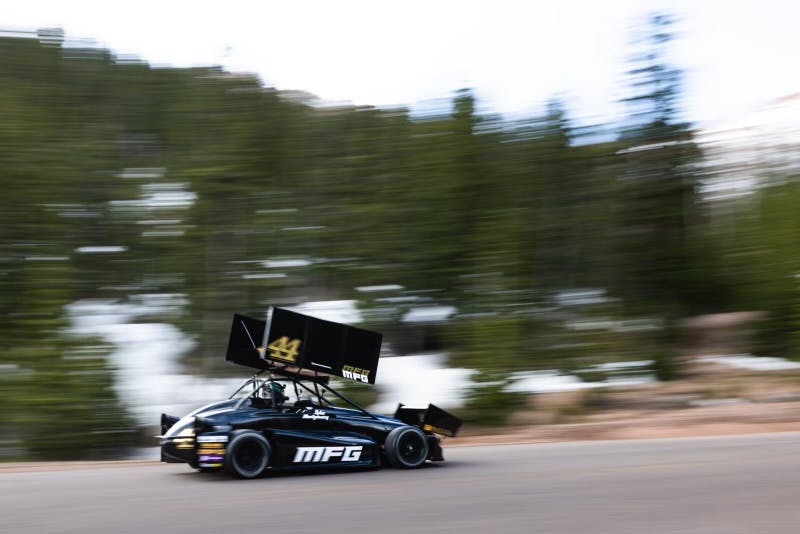
For a race held at that altitude, the Chevy powerplant wasn’t ideal. Somewhat similar in spec to your typical LS3, this is an engine typically used in a Trans-Am TA2 car. With a dry sump system, minor bolt-ons, beefier internals, and a Life Racing standalone ECU aiding it, the 6.4-liter engine makes roughly 500 horsepower at the wheels—but that’s at sea level.
When dynoed near the starting point of the Pikes Peak Hill Climb in Colorado Springs, it made 380 at the wheels. An educated guess suggested it would produce roughly 250 towards the top. That’s where turbochargers would really come in handy, but modifying the engine to receive boost was not in MFG’s budget.
Sylas put in plenty of hours on the simulator to ensure his familiarity with the course would not be the limiting factor.
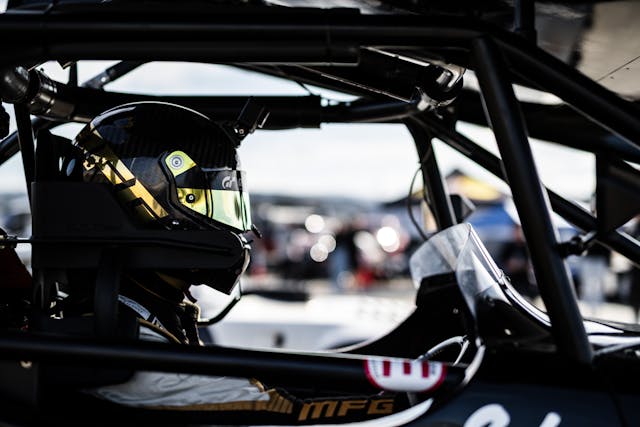
It was only during testing the week before the race that the setup was dialed in. Surprisingly, the team hadn’t needed to make many changes, but the one-off aero package—comprising the rear pods from a 2015 Dallara DW12 Indy car, a front splitter mounted to the underbody, and a giant top-mounted wing—had to be massaged, trimmed, and tweaked to suit both the regulations and Sylas’ handling preferences.
It took some time before Sylas was comfortable with the new aero balance. Mild understeer dogged the car in early testing, so the team tweaked the front kingpin tweaks for more negative camber and relocated the main wing. On a course lined with cliffs, Sylas needed to feel confident the front would follow every minute input. Only minimal understeer was tolerated. Finally, they achieved a satisfactory level of turn-in.
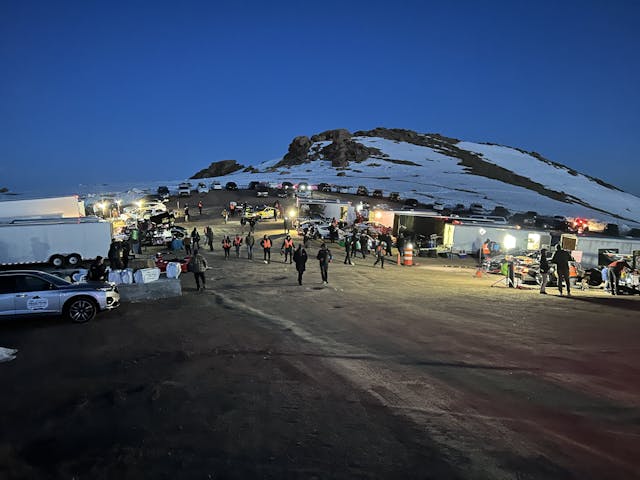
After adjusting to the grueling schedule at Pikes Peak, Sylas put in a series of steady practice laps to learn when and where to take risks. No close calls, no histrionics—just a series of methodical laps to find a bit more speed here and a bit there. When it came time to set a recorded laptime, he covered the 12.4-mile course in 9:55.53.
Sylas and the open-wheel Frankenstein finished eleventh overall, and second in the open-wheel category—just behind mentor Cody Vasholtz, who’d just set a new class record. When they heard they also received a Rookie of the Year award, Sylas and the team were elated. Big names like David Donohue came to congratulate the talented newcomer, who could barely contain his excitement during his twenty-five-hour drive back home.
Once MFG had returned to the Bay Area, the team could sit contented for only a little while; another event, Gridlife Laguna Seca, was just on the horizon. They could not pass up the chance to generate some publicity for their new creation.
After the grueling, serious atmosphere at The Race to the Clouds, Sylas was eager to experience the lighthearted, welcoming ambiance for which Gridlife events had become famous. Gridlife promised entertainment and fun—the two things Sylas felt weren’t always present at club racing weekends on the West Coast. “Northern California develops some exceptional drivers, but sometimes it’s a little too serious there to have fun,” Sylas explained.
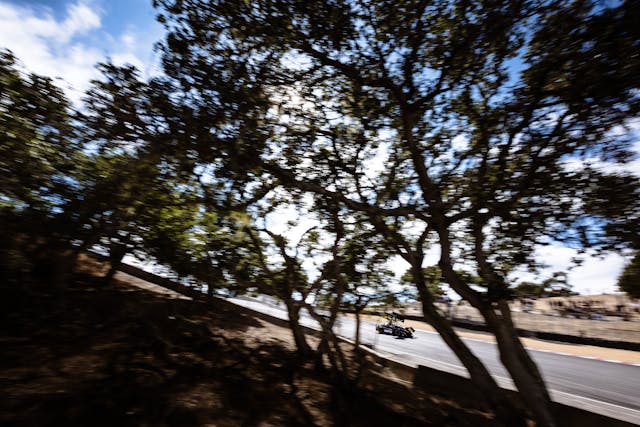
Additionally, the wide range of vehicles present meant that the MFG’s open-wheeler could make a name for itself among comparable cars. MFG decided to run time trials in the Super Unlimited class, which hosts prototypes, formula cars, and other purpose-built racers lacking a VIN number.
Having spent so much time preparing for Pikes Peak at nearby Sonoma Raceway and Laguna Seca, MFG wasn’t planning on making many adjustments for Gridlife. Besides the routine nut and bolt check before every big weekend, the only adjustments they made were a tweak the front wing and figuring out the ideal tire pressures once at the track.
These tires were the same set that had carried the car to Pikes Peak’s summit not three months earlier. Why not? They’d only been through one heat cycle, after all, and the car felt reassuring with the alterations they’d made on the mountain. They were curious how much their Pikes Peak setup would improve upon their previous best at Laguna Seca (1:33.4).
Once there, they realized that the stability-first setup Sylas had wanted on the unforgiving mountain didn’t suit Laguna too well. Sylas aimed to find more oversteer, since a wide-flat road course offers opportunities to explore the utmost limits of the car. He wanted to let it all hang out.
“We increased the front wing angle to help loosen it up in the faster corners and drive it more off the rear. I could get on the gas in the middle of Turn 3 and settle into this friendly yaw state—I could drive it like you’re supposed to drive a sprint car! Basically, I could induce plenty of rotation pretty easily, and the wing endplates would create side force that kept the car from over-rotating. For obvious reasons, I didn’t want to try this at Pikes Peak.”
Not that he couldn’t be totally careless now that he was driving somewhere with real runoff. “Early in the day, I had to drive tentatively over the curbs and the new runoff areas because I was worried the car might bottom out,” he admitted.
But once he got acquainted with the newly repaved Laguna and the way the car handled with its new suspension, Sylas began chucking it around like a go-kart. “It’s the nature of the solid rear axle, I guess. You can throw it in and, even though it’s planted mid-corner, much throttle at the exit would cause oversteer, but a neutral sort of oversteer. It’s all very manageable—kind of like a big kart!
“I pushed hardest in Turn 5, where, because of the camber, the gradient, and the extra runoff area [after Laguna Seca’s recent repave], I could attack and rely on the hill and the camber to catch me if I overdid it. I was starting to really enjoy the typical sprint car characteristics.”
Focused on the Show
With all the hype preceding the first Gridlife event hosted on the West Coast, it was not surprising that the place was packed with all stripes of racing junkies. YouTubers, big-name drifters, and a few Hoonigans made an appearance. The five time-attack classes were comprised of 100 entrants from California and the Midwest. Then there were the forty-odd wheel-to-wheelers in Gridlife Touring Cup.
“It’s phenomenal seeing forty cars sharing the track. It’s not often Corvettes, S2000s, M3s, and Miatas all run together. What I like most is the emphasis on competition; it’s less about who’s able to spend the most on the ‘best car.’”
As was the plan, the open-wheel car turned many heads in the pits, but not all comments made were laudatory. One commentator was happy to mention how, when watching the car in action, the MFG car’s overwing was about as effective at generating downforce as a piece of plywood would have been. Funny enough, this bit of gentle derision only made the MFG machine look stronger when running against some of the well-developed products from big marques.
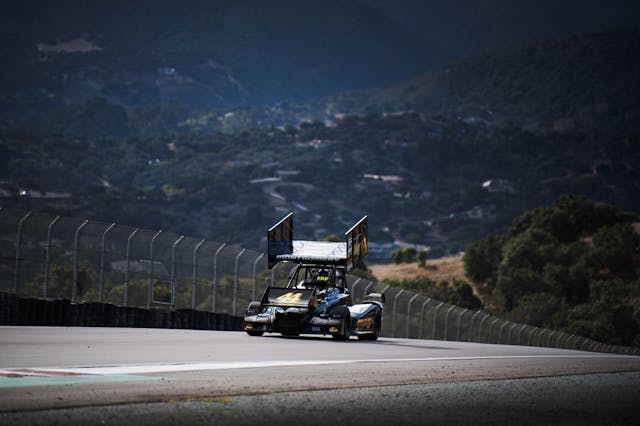
Sylas built his pace steadily as the day went on, relying on the same meticulous approach that he had honed along Pikes Peak’s unforgiving, sinuous roads. While still getting up to speed, he found himself leaving the pits directly behind James Kirkham in a Mercedes AMG GT3—the first benchmark he’d been able to follow closely since his USTCC debut a year prior.
The additional pace, found after the adjustments made on the mountain, was obvious. Not only was Sylas nipping at the heels of a professional racer in a GT3 car, he was able to find a way around. After putting together a few tidy laps in pursuit of the big Benz, he started to put a respectable gap between the two cars. Within a few more laps, he was lapping in the 1:28 range—nearly a full second faster than Kirkham.
“Here we were, our harebrained project outrunning a top-shelf GT3 car from a manufacturer with deep pockets. What other event would you get to see those two battle it out on track?”
Later in the day, he was able to see just where he stacked up against Robin Shute, the fastest man at Pikes Peak 2023. Although both Robin and Sylas ran at the pointy end of the prototype pack—finishing first and third, respectively—their cars could not be more different. In comparison to the bathtub-shaped open-wheeler, Robin’s low-slung Wolf TCS-FS racer looked like something out of Buck Rogers.
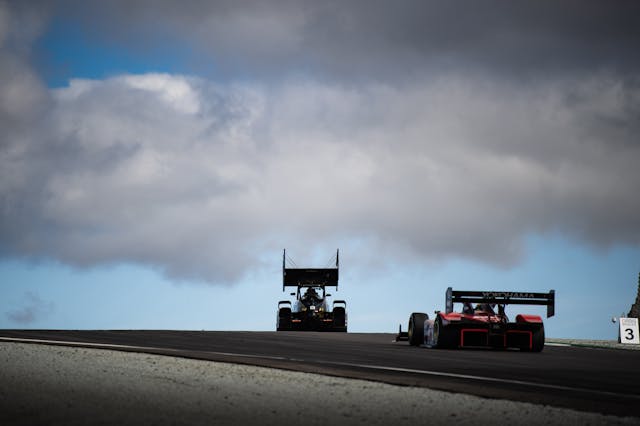
The second day of running at Gridlife culminated in Sylas setting two consecutive laps of nearly the same time. The marginally slower of the two was much more spectacular. “I tried to drive the car off the rear a little more that lap, and I think you can see that in the onboard footage.”
Sylas finished his Gridlife debut with a best of 1:28.14—just three hundredths faster than the lap in the clip above. A trip to the top of the Super Unlimited podium and some new hardware to take home put them in a festive mood, and Gridlife’s night events were there to keep that buzz going.
“Gridlife gave me a snapshot of what makes racing on the East Coast so good. They seem to be more about fun than some of us West Coasters, who usually keep our cards close to our chest,” Sylas remarked. “After Saturday’s races at certain West Coast events, it’s hard to find anyone socializing at the track; many go back and to rest for the day ahead.”
That wasn’t the case at Gridlife. After the podium celebrations ended, Sylas and the crew got into their best civvies and strolled down to the infield, where T-Pain was performing. “There were plenty of people packed into a smallish place, but everyone stayed respectful. My guess is this is how some people feel when they’re attending Burning Man; everyone is brought together by the same sort of passion.”
***
Check out the Hagerty Media homepage so you don’t miss a single story, or better yet, bookmark it. To get our best stories delivered right to your inbox, subscribe to our newsletters.
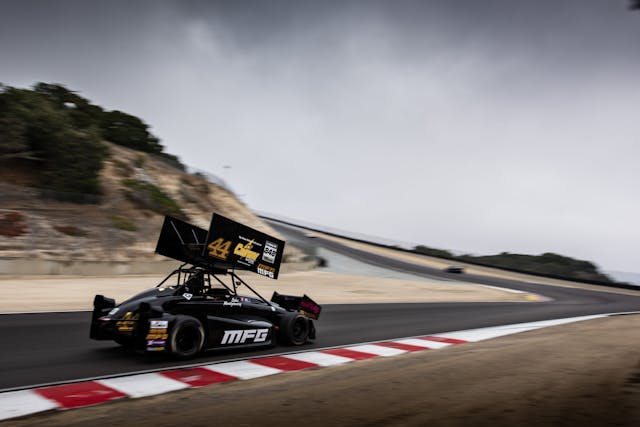
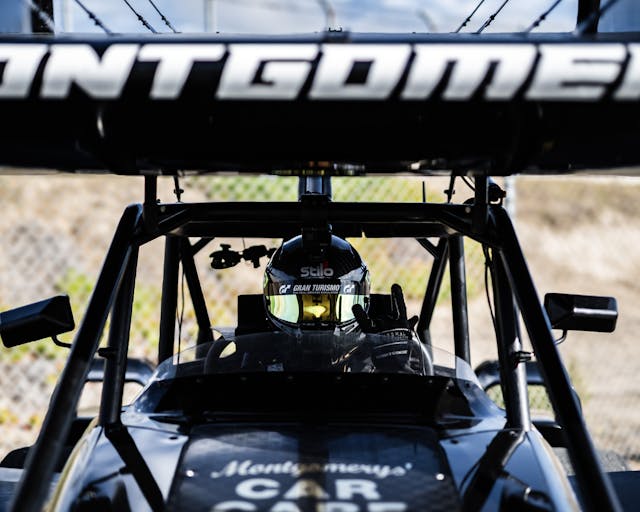
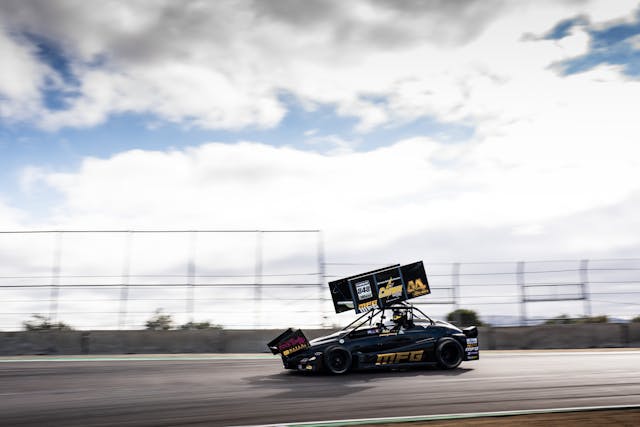

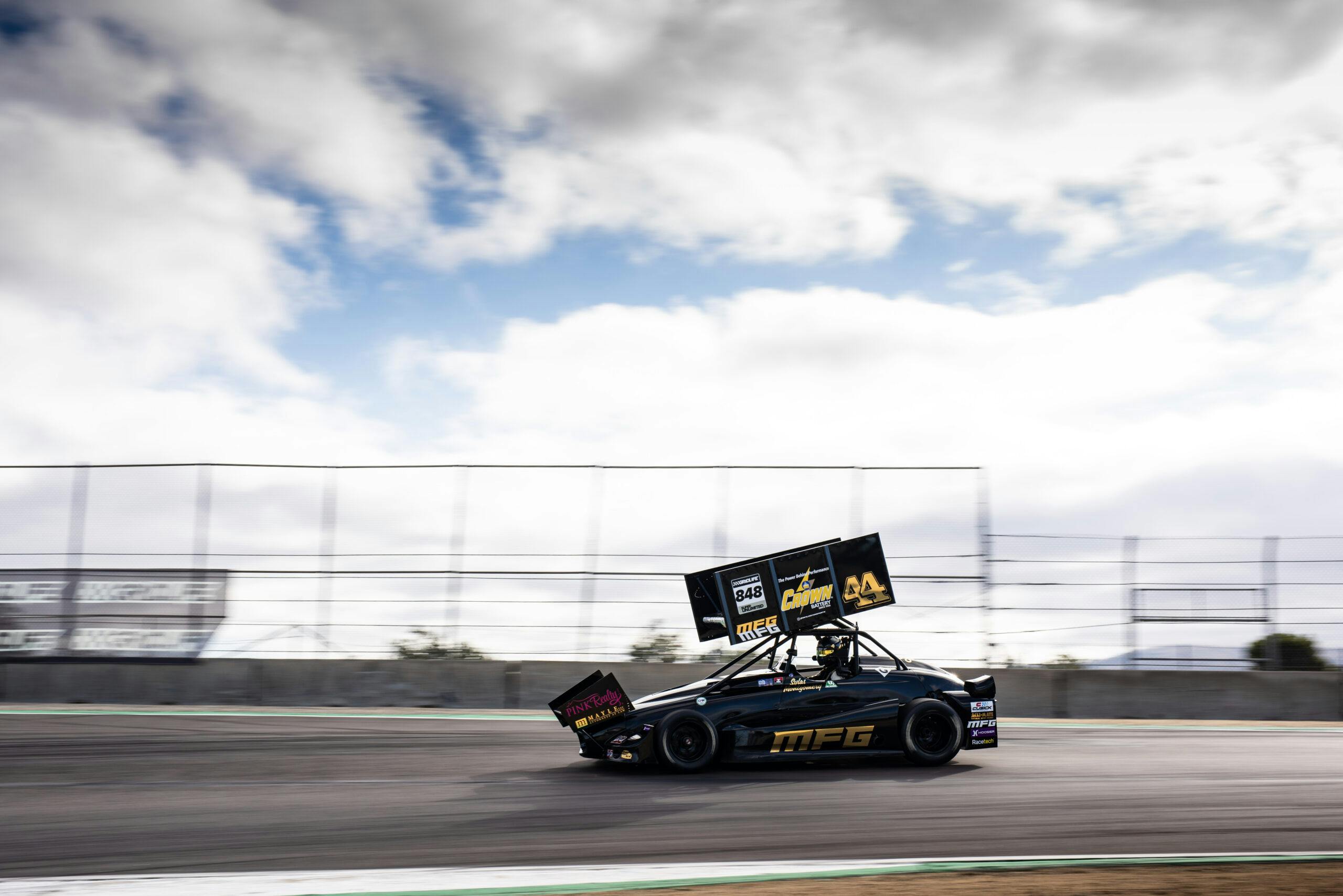
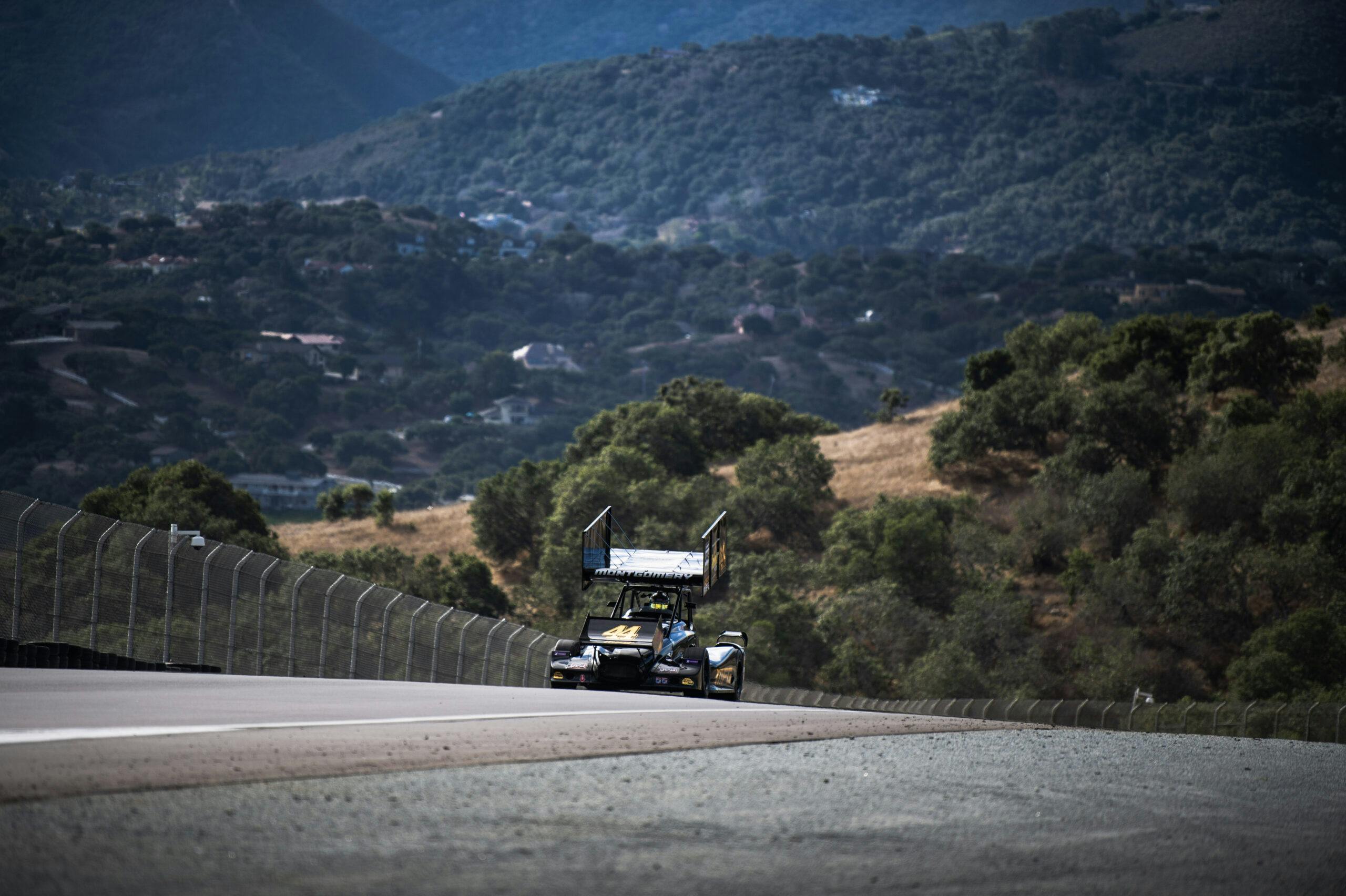
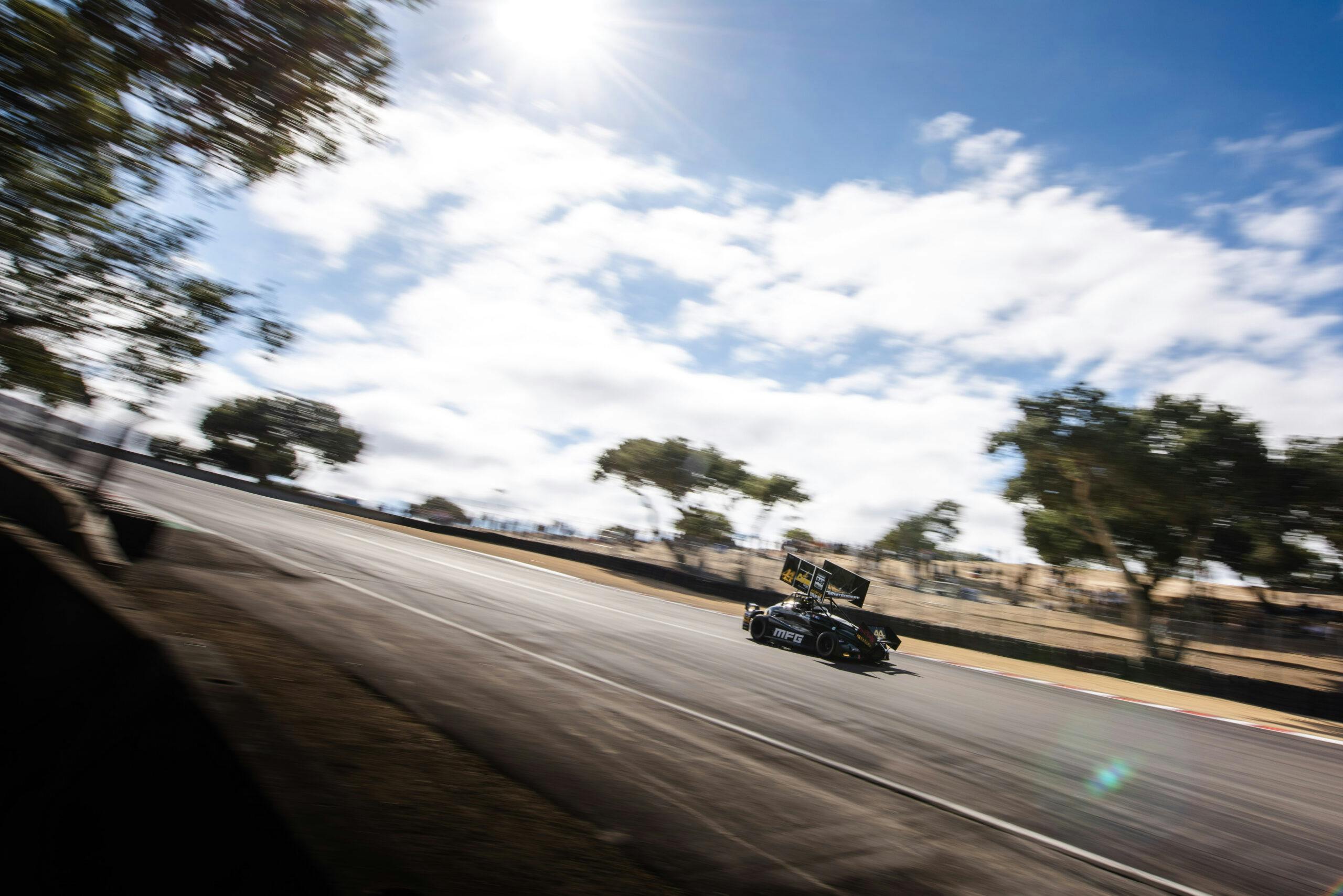
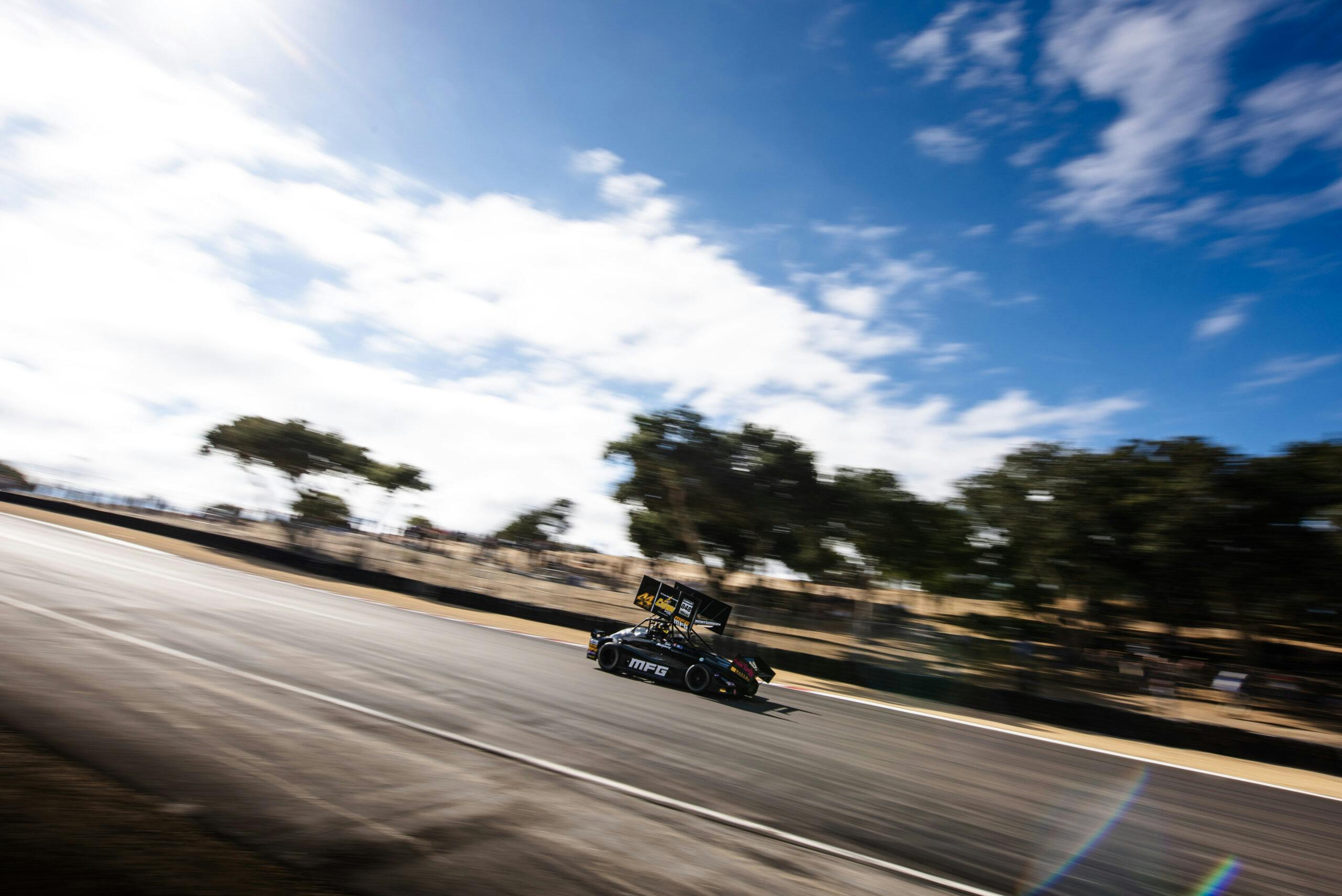

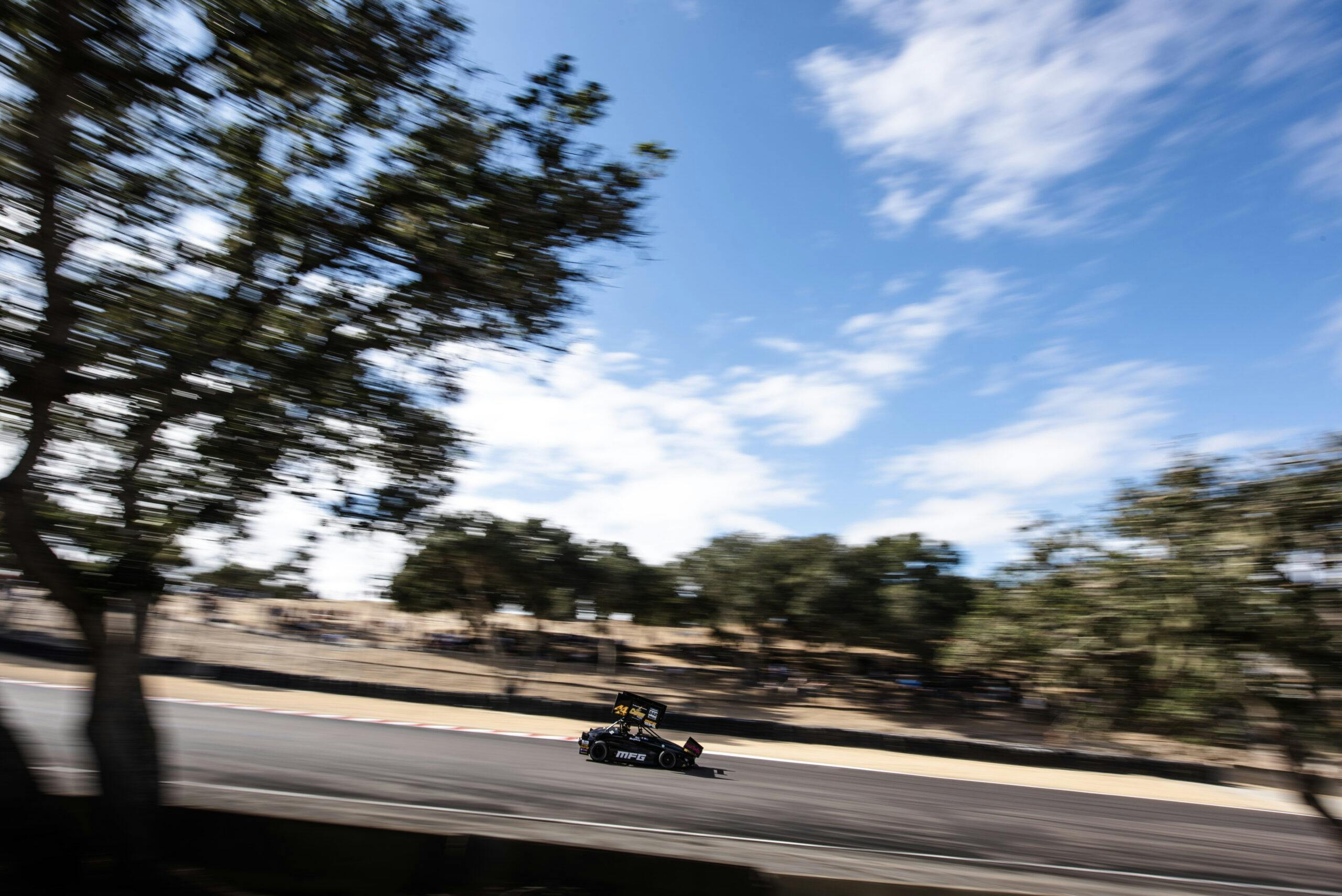
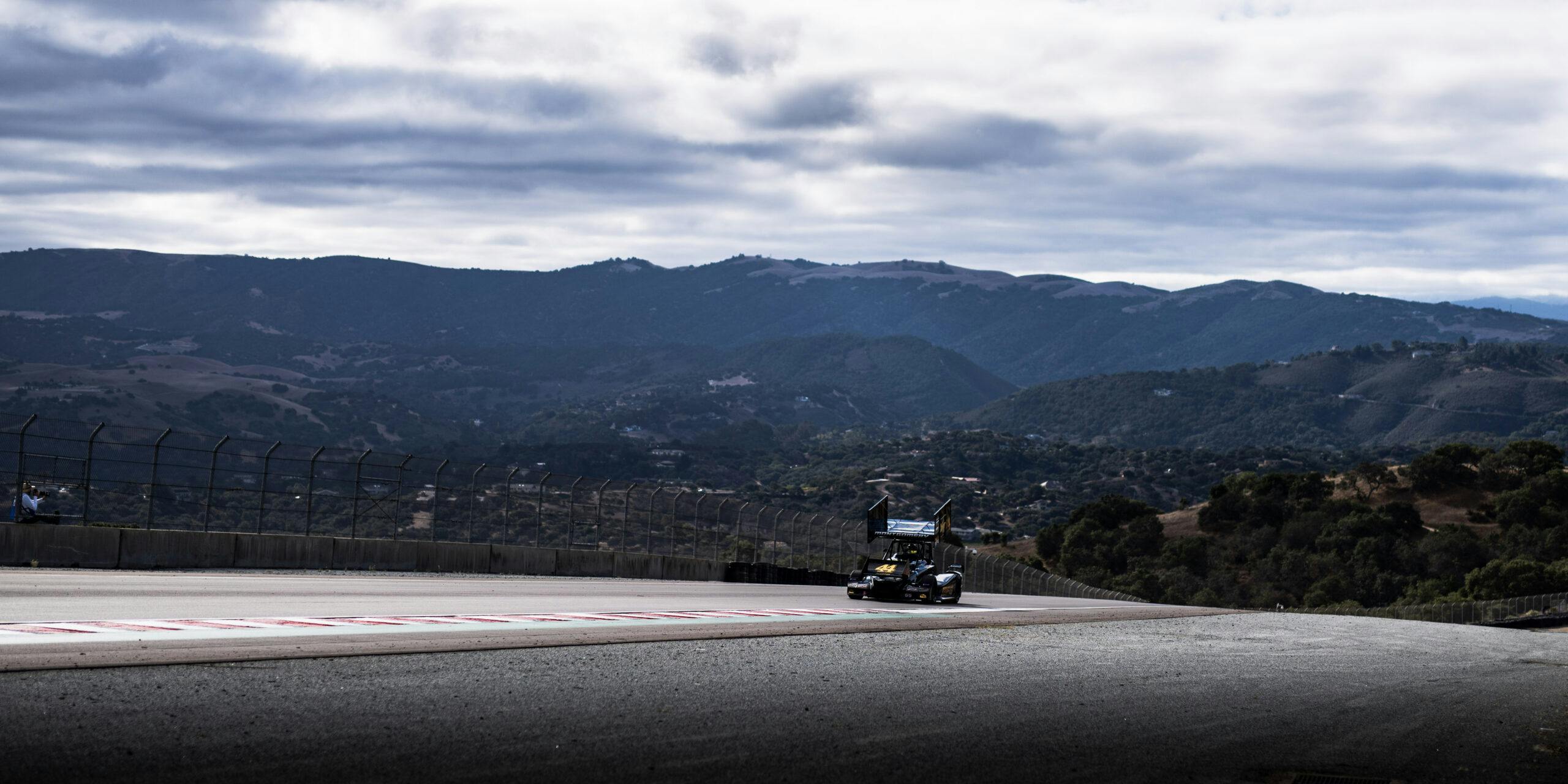




















Good to hear Tim Barber is still at it – he’s related to an old friend of mine, and we had a great wise-cracking time at a PRI show years ago.
Love Pike’s Peak. This looks like a fun car to be driving up the mountain.
I saw the sprint car here in Colorado Springs this year and it brought back some great memories from back in the 1960’s when as a teenager I learned about race cars helping my dad work on the sprinter driven by a good friend Vern Root. That was back when the road was dirt and Vern’s car was built in his garage. Thanks for the memories and congratulations on the success.
I thought I was the only one foolish enough to try something so outrageous !
I started with a used Modified class TEO chassis and got it about 3/4 of the way into becoming a street car which was my goal. I had the frame all done and the wiring all set for what it would take to make it street-able / legal and I had most of the body done and in primer.
It ended up being sold to a friend who did a bit more on it and got it closer to road ready but was sold out West to someone else. What ever became of it I don’t know ?
Kinda sorry I let it go considering how close I was , but a life changing accident changed my plans.